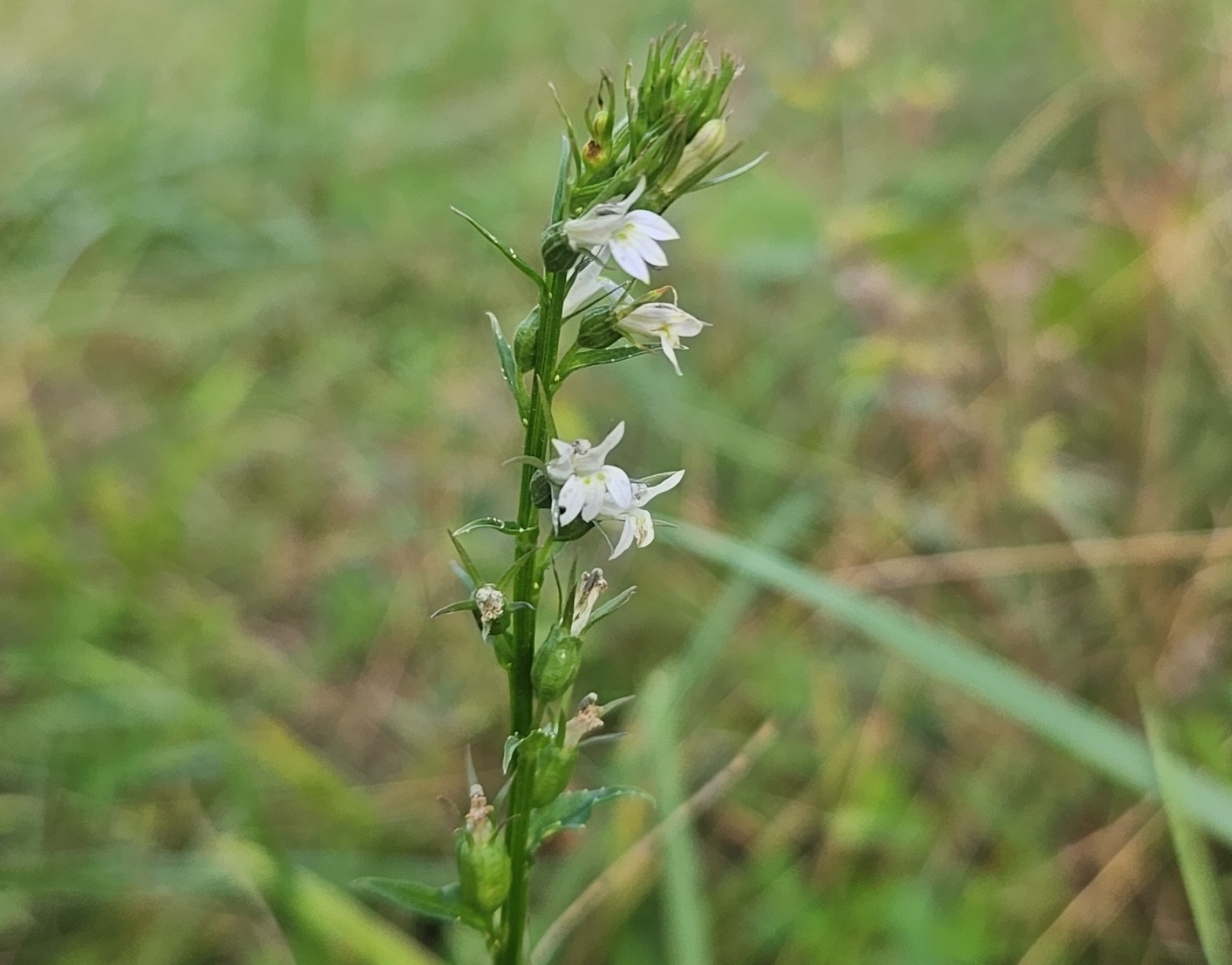Nature nerd Emily Bredthauer took most of the pictures enclosed below between August 30 and October 4, 2025 in Story, Marion, and Dallas counties.
I feel so blessed when I come upon a plant I don’t recognize. It’s like a gift from the Universe, inviting my curiosity to be satiated by the endless wonder of the natural world.
In late August, Lobelia inflata was a gift from my rain-soaked sacrament—the very small lavender-colored flowers caught my eye amongst the bevy of bright green.



I shared my photos in a beloved resource of native plant knowledge: the Iowa wildflower enthusiasts Facebook group. The group’s very knowledgeable admin Lora Conrad came to the rescue, confirming the plant identification.
Lora also shared that Indian tobacco and puke weed are popular common names for this intriguing member of the Bellflower family. Puke weed is a reference to the plant’s use by Native American people as an emetic.
Susan Sprout of the North Central Pennsylvania Conservancy described the countenance of Indian tobacco wonderfully:
Indian Tobacco is a thinner and much less robust-looking plant [than Great Lobelia] at three feet tall with ½ inch pale lavender to white flowers. Each flower tube is cupped at the bottom by a green leafy calyx with five thin green points that extend out beyond the lobes of the flower. Here is the totally cool thing about the cup on the bottom of the flower tube – it is where the seeds develop after pollination has taken place AND it is where the species name, inflata, comes from.
A closer look at the leaves and flowers:


Seeds developing after pollination:

Indian tobacco plants with seed pods, blending in with surrounding plants:

To quote again from Susan Sprout: “As the fruits grow and swell, they morph or inflate into round capsules measuring about 3/8th inch and look like tiny balloons tied on the stems. When mature and dried, the balloons will burst and give seeds to the wind!”
I had conjured up an image of an engorged tick when I first laid eyes on the pollinated capsules. That may have been more of a projection of my inner fears (organic Rorschach test?) than objective observation.



According to the Illinois Wildflowers website, Indian tobacco thrives in “partial sun, moist to dry conditions, and a soil that contains loam, clay loam, or rocky material. Poor soil is readily tolerated, although this will stunt the growth of the plants somewhat.”
The same website notes,
Habitats include open deciduous woodlands, savannas, thickets, areas along woodland paths, powerline clearances in wooded areas, partially shaded seeps, and abandoned fields. This species prefers areas with a history of disturbance, particularly when this removes some of the overhead canopy in wooded areas. It is somewhat weedy.




My Iowa wildflower enthusiasts hero gave me permission to publish two of her detailed photos of Lobelia inflata in the late fall or winter. Lora Conrad photographed a plant with dried capsules against a leaf litter background in November 2022:

Here’s another one of Lora’s photos, featuring Indian tobacco against a snowy background in February 2022.

The experience of noticing, identifying, and learning about Lobelia inflata has left me full of gratitude—for the gifts of Mother Nature, the enchantment of an unfamiliar plant, support and kindness of Iowa wildflower enthusiasts, and the knowledge to greet this now familiar friend by name.


Whenever my heart wells with gratitude, I think of this except from Robin Wall Kimmerer’s book Braiding Sweetgrass: “Even a wounded world is feeding us. Even a wounded world holds us, giving us moments of wonder and joy. I choose joy over despair. Not because I have my head in the sand, but because joy is what the Earth gives me daily and I must return the gift.”




1 Comment
This joyous essay and photos are reminders of a human truth...
…and that truth is, when a human being starts to really learn botany, that human being usually starts to really care about plants. The same is true of birds, snakes, mushrooms, butterflies, and other wild biota. Within human hearts, learning and loving tend to connect.
It was Iowa-born Aldo Leopold who wrote in the 1940s, “It might be wise to prohibit at once all teaching of real botany and real history, lest some future citizen suffer qualms about the floristic price of his good life.” The qualms are real now. But real botany and history continue, and thank you to the Iowans who are doing the teaching, learning, and caring.
PrairieFan Mon 20 Oct 6:08 PM